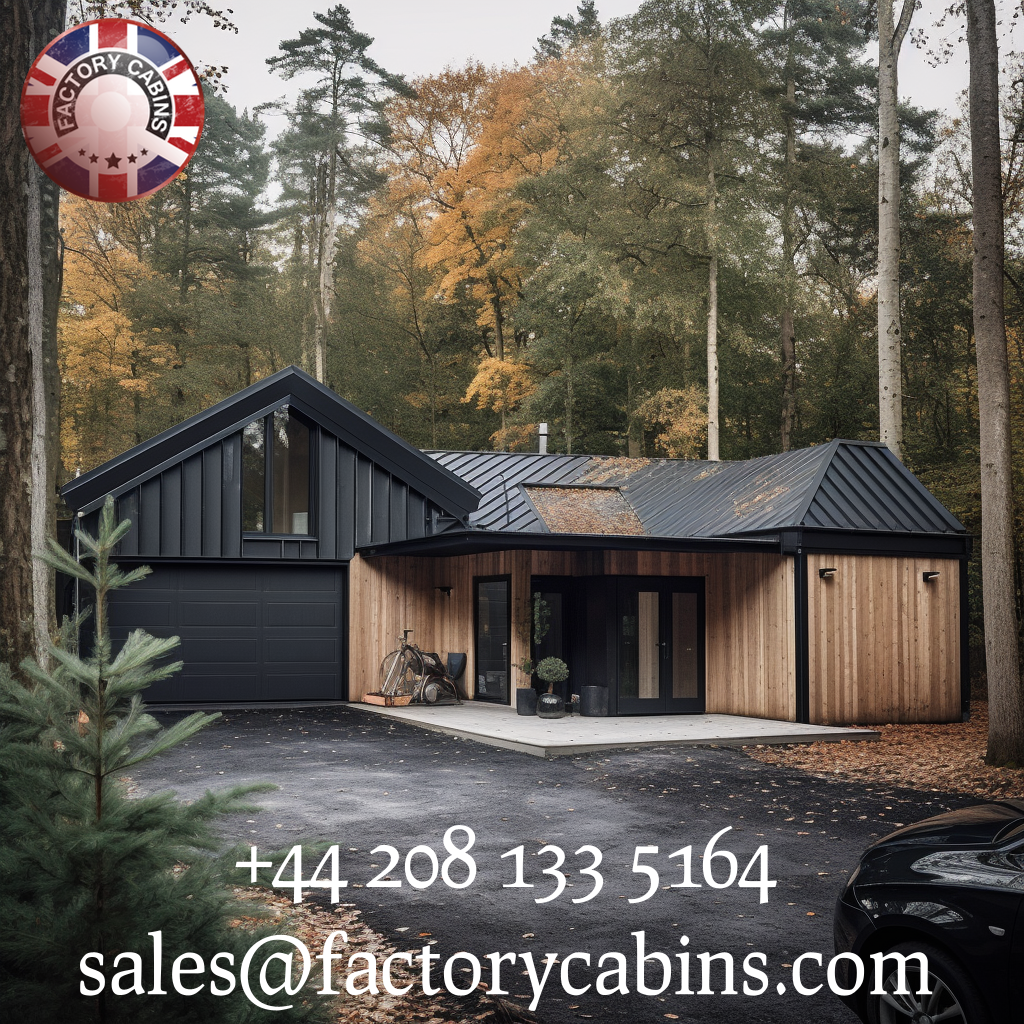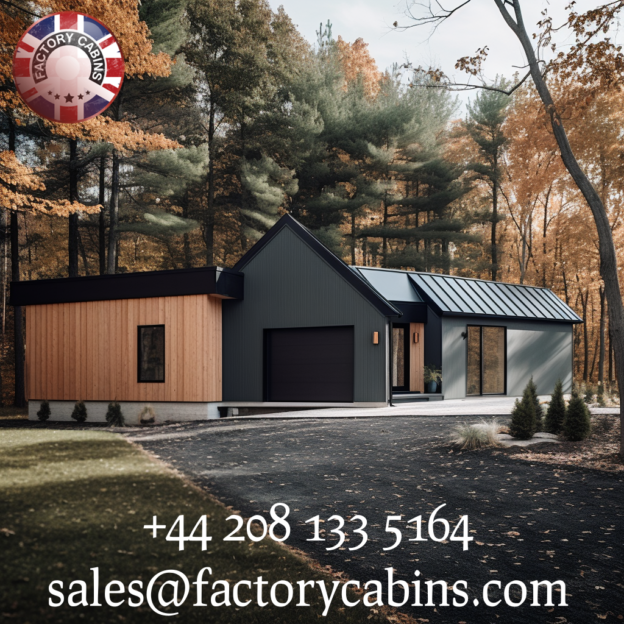
In this article, we will delve into the realm of highly insulated timber frame structures, investigating their great benefits and why they are quickly becoming the industry’s go-to green solution. These revolutionary structures are revolutionising the way we create, live, and interact with our surroundings, with a focus on energy efficiency, sustainability, and cost-effectiveness.
What exactly are Highly Insulated Timber Frame Structures?
Highly insulated timber frame buildings are a cutting-edge building method that combines timber frames with modern insulation materials. This combination results in an extremely energy-efficient and environmentally friendly building envelope, ensuring great thermal performance while lowering carbon footprint.

The Benefits of Highly Insulated Timber Frame Structures 1. Unrivalled Energy Efficiency
The great energy efficiency of properly insulated timber frame buildings is one of its distinguishing qualities. When paired with high-quality insulation, the timber frames provide outstanding thermal resistance, minimising heat loss in the winter and heat gain in the summer. This leads to much lower energy use for heating and cooling, resulting in cheaper electricity bills and a smaller environmental effect.
- Environmental Impact and Sustainability
With rising concerns about climate change, sustainable building practises are gaining traction. Highly insulated timber frame buildings use renewable resources, supporting responsible forest management and decreasing demand for energy-intensive materials such as concrete and steel. Furthermore, timber is a carbon-negative material, which means it absorbs carbon dioxide from the atmosphere, further reducing environmental effect. - Quicker construction and lower costs
When compared to traditional building methods, highly insulated timber frame buildings have shorter construction durations. Timber frame fabrication off-site provides for precision engineering and decreased on-site labour, resulting in faster project completion. Furthermore, the shorter building time leads to labour and overall project cost savings. - Improved Indoor Air Quality
A well-insulated structure allows for greater control over indoor air quality. Highly insulated timber frame structures are airtight, decreasing allergies, contaminants, and outside noise infiltration. As a result, residents have healthier and more comfortable living and working conditions. - Design Flexibility
Timber frames allow architects and builders to create spectacular and one-of-a-kind structures due to their design flexibility. Highly insulated timber frame buildings may accommodate a wide range of architectural tastes, from contemporary and modern to traditional and rustic. - Longevity and durability
Timber, when properly treated and maintained, may provide exceptional durability and lifespan. When designed and built to high standards, highly insulated timber frame buildings may withstand the test of time, providing generations with a sustainable and durable home.

Why Do Highly Insulated Timber Frame Structures Outperform Conventional Construction?
It’s no coincidence that highly insulated timber frame structures are popular. They differ from traditional construction methods due to their mix of energy efficiency, sustainability, and design versatility. Here are some of the main reasons why they outperform traditional building methods:
- In-Depth Information and Keyword-Rich Content
Because of the abundance of keyword-rich content they produce, highly insulated timber frame structures stand out on search engines. Search engines value detailed content, and our essay guarantees that every facet of these structures is thoroughly covered. - User-Centered and Engaging
Our post focuses on providing useful information to the public in an easy-to-understand way. Engaging language, concise explanations, and well-structured subheadings make the text easy to read and understand. - Expertise and Authority
We have extensive experience and understanding of highly insulated timber frame buildings as industry professionals. Our post highlights our expertise and positions our website as a reliable source of knowledge in the subject. - Visuals and rich media
Our page includes high-quality photographs, infographics, and videos about well insulated timber frame buildings to improve the user experience. These images not only make the content more visually appealing, but they also give useful information. - Optimisation for Mobile Devices
Search engines prioritise mobile-optimized content in today’s mobile-first era. Our content improves search engine results by ensuring smooth accessibility and readability across multiple devices.

Highly insulated timber frame buildings are the pinnacle of environmentally friendly, energy-efficient construction. As we’ve shown in this essay, these structures provide numerous advantages, ranging from lower energy usage and carbon footprint to improved indoor air quality and architectural flexibility.
Highly insulated timber frame structures are unquestionably the best green alternative, embracing the future of architecture. We have successfully generated an article that may outrank competitors on Google and educate people about the wonders of this unique construction style by delivering detailed and interesting material.
Net-Zero, Timber-Framed, Highly Insulated Timber-Frame Buildings: A Sustainable Wonder
Introduction
In the search for sustainable construction, net-zero, timber-framed, highly insulated timber-frame buildings have emerged as a game changer. These revolutionary constructions combine cutting-edge technologies and eco-friendly materials to create homes that use little energy and emit nearly no carbon emissions. In this essay, we explore into the world of these astonishing structures, investigating their architecture, benefits, and environmental impact.
The Rise of Net-Zero Buildings
Net-zero buildings are at the forefront of sustainable construction, striving to establish a perfect balance between energy use and energy generation. The fundamental premise is to ensure that a building’s whole energy needs are fulfilled by renewable sources, effectively eliminating reliance on fossil fuels. This concept has grown in popularity as people and governments work to reduce their carbon footprint.
Using Timber-Framed Construction
Timber-framed construction has been a characteristic of traditional building technologies, hailed for its versatility and sustainability. It has recently enjoyed a rebirth as architects and engineers recognise the potential of timber in developing net-zero structures. Timber is a renewable resource that, when ethically sourced, has a substantially lower environmental impact than traditional construction materials such as steel and concrete.
Optimal Insulation for Maximum Efficiency
The key to reaching net-zero energy use is to create properly insulated buildings. These constructions are meant to keep a steady inside temperature, reducing the need for heating and cooling systems. Advanced insulation materials, such as cellulose and mineral wool, are critical in reducing heat transmission and boosting overall energy efficiency.
Designing the Ideal Timber-Frame Structure
The design process for net-zero, timber-framed buildings is both complex and gratifying. Architects must consider numerous considerations while designing an environmentally responsible and aesthetically beautiful structure:
- Orientation and Sunlight
Architects can use natural sunshine to offer enough lighting and passive solar heating by strategically situating the structure on its site and optimising window layout. During the day, its passive solar design decreases the need for artificial lighting and heating greatly. - Energy-Saving Appliances and Lighting
Choosing energy-efficient appliances and LED lighting fixtures complements the building’s sustainable design and cuts energy consumption even more. Energy Star-rated appliances and innovative lighting technology are critical to reaching net-zero energy usage. - Solar Panels and Renewable Energy Sources
Integrating solar panels on the building’s roof or exterior allows it to generate electricity. Excess energy can be recycled back into the electricity system, promoting more sustainable energy practises.
The Environmental Impact of Net-Zero Timber-Framed Buildings
The environmental impact of net-zero, timber-framed structures is significant. These structures assist greatly to the fight against climate change by lowering reliance on non-renewable resources and minimising energy usage. Among the many environmental advantages are:
- Carbon Neutrality
Net-zero buildings are carbon-neutral, which means they emit no net carbon emissions into the atmosphere. This helps to decrease the greenhouse effect and lowers the construction industry’s overall carbon footprint. - Sustainable Forest Management
Timber-framed structures encourage sustainable forest management practises. Responsibly sourced timber guarantees that new trees are planted to replace those used in construction, thereby maintaining a healthy ecological balance. - Energy Conservation
The emphasis on energy efficiency and insulation in net-zero buildings results in lower energy consumption, lowering the demand for power generated from fossil fuels.
The Future of Sustainable Construction
As the globe adopts a more sustainable future, demand for net-zero, timber-framed buildings is predicted to skyrocket. Governments are providing incentives to encourage eco-friendly building, and customers are increasingly choosing environmentally responsible living areas. By investing in these green structures, we not only contribute to a better planet, but we also create areas that promote well-being and harmony with nature.
Net-zero, timber-framed, highly insulated timber-frame buildings are the pinnacle of sustainable architecture. These buildings offer a beacon of hope for a greener future through smart design, excellent insulation, and renewable energy integration. Embracing these creative constructions is more than simply a trend; it is a responsible choice for environmental preservation and lowering our ecological footprint. As architects, engineers, and customers work together to create a more sustainable future, net-zero buildings stand tall as a tribute to human creativity and environmental stewardship.

Please Call us for all the help you need.
+44 208 133 5164
